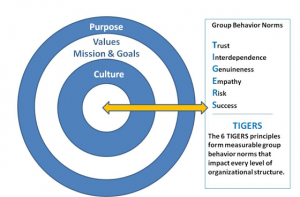Who do you think is next in line for CEO within your organization? Does he or she possess the best collaboration skills? Chances are, you placed your bet on the sales and marketing director, the general counsel, the financial VP, or the operations director.
You wouldn’t even think that about your Chief Human Resources Officer or CHRO (or anyone in HR for that matter). To be candid, Human Resources (HR) Directors or CHROs are rarely groomed for the top position. They aren’t given the opportunity to gain business experience the way other executives are. Instead, they are confined to their department and expected to support leaders and potential leaders around them.
The thing is, many leaders in the C-suite often lack people experience. The deficiency is hardly noticeable but the effects can be catastrophic. When leaders climb the corporate ladder without dedicating a substantial portion of their time to HR, they fail to value the people part of their business. This includes their employees, team members, and customers. As a result,
- Collaboration suffers:
- Strategies are executed poorly because of employee disengagement;
- Employees tend to leave not because of the work but because of dreadful bosses;
- Morale is low because of a distressing work culture and a lack of recognition and respect from all levels;
- Businesses and customers are lost because of careless decisions
Why do HR leaders have the best collaboration skills?
The bigger reason is that HR leaders help build trust, which is one of the best collaboration skills. Trust is the T in TIGERS. It’s a TIGERS principle that we introduce in every training and coaching session. When employees don’t trust their leaders, they aren’t inclined to tackle initiatives. Expect them to do the minimum and nothing more. On a larger scale, misconduct can be rampant whether it involves sexual harassment or business ethics. HR leaders are in the best position to build trust because they know how to create a culture that instills confidence. Further, they can build a strong foundation of behaviors and values that would cut across other social issues (racism, gender inequality… etc)
Another reason that CHRO’s are adept at flexing their best collaboration skills is that an HR person can help create an environment of safety. Psychological safety, that is. 2020 is a perfect example. When cities were on lockdown, organizations had to move quickly to keep up with the changing demand. But keeping up with the demand wasn’t enough. Many organizations had to rethink the way they did business, including the creation of innovative ways to give clients exceptional customer experiences.
The way to survive was to speed up the decision-making processes by tapping the expertise of employees. This means giving teams the authority to make decisions on their own and the elbow room to try and fail under highly structured criteria. The psychological safety and emotional support that comes from allowing your employees to try, fail, and learn do wonders for both engagement and agility.
This isn’t to say that the next CEO must always be someone from HR
But the strength that comes from someone adept with people dynamics cannot be ignored.
As a leader takes more responsibility, other skills take precedence:
- Ability to listen
- Conflict Resolution Skills
- Negotiation skills
- Ability to focus
- Ability to keep calm under pressure
- Team Building skills
- Seeing the bigger picture
After some time in a field of expertise, you will undoubtedly have technical skills and experience. These skills are, of course, extremely important to professional development. Taking your career to the next step by accepting a position of leadership and greater responsibility means that an entirely different set of skills must be honed as well.
These additional skills are what we often refer to as people management skills. It’s a skill that must be developed with experience, practice, training, and coaching.
A leader with these skills can spell the difference between a highly engaged, motivated, and productive team versus a demoralized, frustrated team that will most likely jump ship when the rainy days come.
Organizing teams quickly
When it comes to organizing teams quickly, the person with solid people skills, someone familiar with the organization’s talent pool, and relationship dynamics can bring the team forward and beyond.
Passing the baton to someone with substantial people “exposure” or perhaps elevating the HR head to a Vice President role is something all organizations would benefit from looking into.
We often read about how employees must be considered valuable assets that its become cliché. However, they’re often stuck as a “cost center”. What if employees are also seen as stakeholders?
Many CEOs are rocking their markets because of this shift. When the top-tier views the organization as a series of systems, they understand that problems aren’t just the problem of one business unit. Therefore, they tend to focus on cross-functional team development or that type of problem-solving that involves getting people with different expertise to work towards a common goal. This is a different approach – quite different from the proverbial “direction” approach.
Leading people isn’t a reward for a great track record. It’s a huge responsibility that requires not just talent, but training – training that includes employee empowerment techniques that enable them to solve complex problems that benefit the entire organization.
TIGERS has training programs that zero in on this. Mentor and groom the next-generation CEOs and leaders in your organization with TIGERS.
Care to Dig Deeper into best collaboration skills for leaders?
Here is available training on collaborative and people oriented skill development:
- Free course: 6 Principles that Build High Performance Teams and Collaborative Work Culture. Our mission in this certificate course is to give you a working knowledge of the TIGERS 6 Principles, how they came about and what they can do to improve collaboration in your workforce.
- TIGERS Collaborative Leader. The mission of this certificated course is to help you avoid 3 big mistakes that cause collaboration and high performance teamwork to fail. Unlike a traditional top-down work structure, collaborative leadership encourages a more open culture. Each employee understands what’s happening in other departments, recognizes the shared purpose of their organization, and sees how their role fits into that overarching purpose. The role of a collaborative leader is to facilitate cooperation between departments, high performance behaviors in departments and on cross-functional teams and engagement and connection among employees. This course teaches you how to avoid 3 mistakes that cause collaboration and high performance teamwork to fail.
- TIGERS 6 Principles Leadership Fundamentals. The mission in the certificated course is to give you both the skills and attitudes to build and lead high performance teams while doing so within the training design. This program gives you the opportunity to apply what you learn while making a measurable difference in your department or team. Coaching is available as an option with this program, too, so it is offered on demand and with coaching for your optimum success and fulfillment.
- There’s more, too. Contact us today to take your leadership to the next level.
Copyright TIGERS Success Series, Inc. by Dianne Crampton
 About TIGERS Success Series, Inc.
About TIGERS Success Series, Inc.
TIGERS is a Bend, Oregon collaborative work culture consultancy that promotes behaviors that support six principles necessary for high performance work groups. These principles are trust, interdependence, genuineness, empathy, risk and success.
TIGERS offers assessments, micro-training, facilitation and consulting services that transform adequate work groups into high performance work cultures. Schedule a conversation to learn more.
